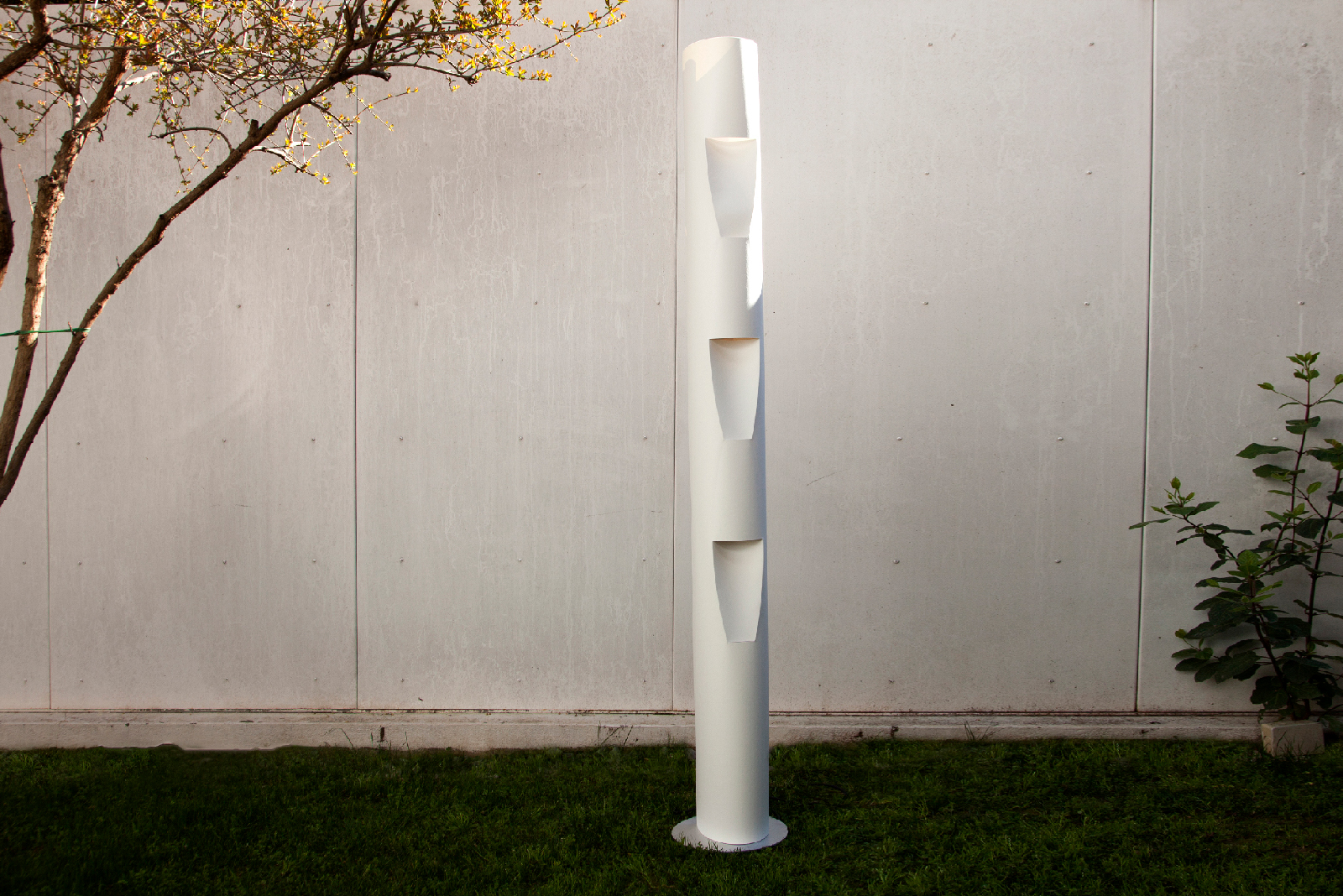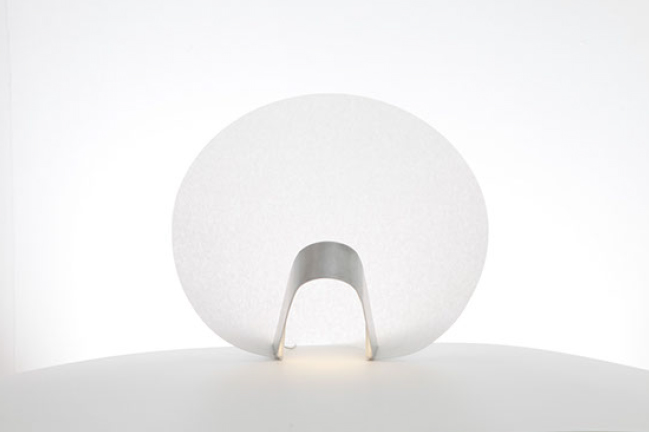Interview Questions: Small Rabbit Design/ Stathis Lagoudakis
Stathis, could you tell us a little bit about yourself? (brief profile, education, professional career, etc.)
I came to London from Athens, where I lived until I finished school, to study painting at the Central School of Art and Design. My masters at the School of the Art Institute of Chicago was on alternative photography and video art.
Afterwards I returned to London where I established my studio and worked for 25 years as a lecturer at different Art colleges. The artwork that I exhibited in many solo and group shows was a dialogue between painting and sculpture. I was also involved with several site-specific installations and interior design projects.
I was very fond of the products that you presented at London’s design trade show 100% Design. How did you get the idea? What inspired you?
The “tower” and “lantern” designs that you saw at 100%design are inspired by the sense of space, drama and scale that you find in architecture and theatre design.
They all derive in some way from my paper sculptures. The quality of the light and its effect on the paper as well as many technical considerations were crucial in the development of the initial ideas.
How did you discover your passion for paper design and what makes it so fascinating to you?
I have early memories from playing with paper pulp at my father’s paper factory and later making model aeroplanes made of paper and balsa wood. I always enjoyed the friendly nature of this material and how easy it is to manipulate it.
After a large exhibition of my 3-dimensional canvases, I started experimenting with creating shapes using thick watercolour paper. In contrast to the previous work which was very precise and labour intensive, these works were spontaneous with the only restriction being that any shape had to be made from scoring a single piece of paper.
All the aluminium sculptures, light designs and wall pieces are developed by using Rhino after flattening the paper models and transferring them into the programme.
How do your lights distinguish themselves from others? What makes them special?
The aim is to make designs that enhance the space they are in both when they are on or off. So even during the day the natural light interacts with the angular and curved shapes of the paper, giving them a quiet, minimal sculptural presence. As the design of the paper is not symmetrical, the shapes and light intensity change depending on the angle from which you view them, in a way the approach is closer to that of sculpture.
Your products are made of three essential components: aluminium, Japanese technology paper and illuminant. Why did you choose these materials and this composition
Paper has always been used in light design to conceal the light source and create a warm, pleasant atmosphere. I wanted to expand this tradition by using new technology papers from Japan and Germany which are tear-resistant, colour-fast and waterproof. Unlike standard paper, there is no need to provided supporting structures because of its strength and durability. It allows the shapes to remain fluid without any obstruction.
The aluminium shapes on the other hand provide structure to the designs and encapsulate the LED lights. There is a painterly quality to how the LED colours react with the Perspex and the paper, which has always fascinated me.
Combining these materials allows us to create designs that are modern, sculptural and organic.
Is there a reason why you called your label “Small Rabbit Design“? At first glance, the name does not seem to imply lighting design.
My surname Lagoudakis translates to small rabbit. I like that it’s playful and positive.
What is the best way to integrate your lights into one’s own home?
The ”towers” provide an ambient light that complements other light sources, like the television for example. The dimmable LEDs provide 20 different colours and although their light is soft it can change the mood of the space quite dramatically. We also have a water-resistant version that can be used on a temporary basis in outside spaces.
The “lantern’ design is a more traditional kind of pendant light and can be used in any part of the house. It has a calm presence during the day and then in the evening it reflects intricate patterns of light
How much are your ideas influenced by the topic of sustainability?
Like many other designers, we are very interested with the idea of creating sustainable designs.
Aluminium is amongst the most environmentally friendly metals and the papers we use are recyclable. LED lights are much more efficient than traditional lighting such as fluorescent and incandescent lights. 95% of the energy in LEDs is converted into light and only 5% is wasted as heat. We also only use recyclable card for all of our packaging.
Why did you choose the trade show 100%Design to showcase your products? What makes the exhibition special?
We decided to launch Small Rabbit Design at Olympia because it is a beautiful exhibition hall and 100%Design is a well-established design fair that gave us a good first exposure. I always felt that it combines emerging brands with larger more established companies very successfully.




